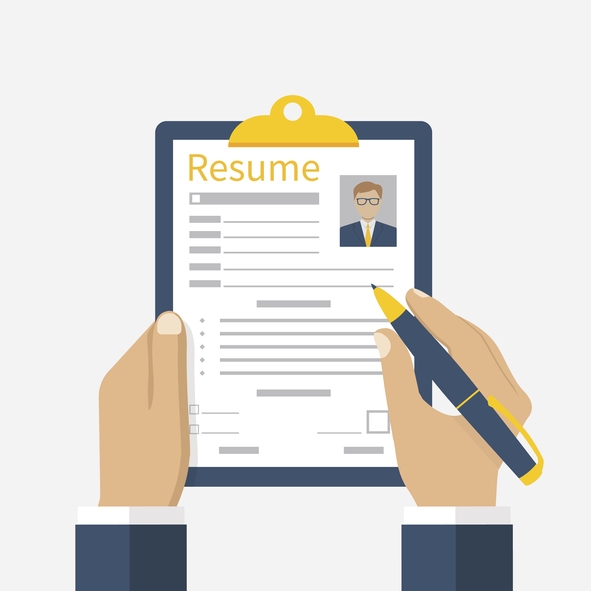You have /5 articles left.
Sign up for a free account or log in.

Istockphoto.com/Anastasiia_new
When many of us think back on our experiences, we see them as points on a timeline -- childhood to high school to college to a job to grad school to the future. This makes sense since we live our lives as a series of moments, moving through time in only one direction. But when talking about yourself to others, do you always have to talk in terms of past, present and future?
If you’re applying for jobs, within academe or beyond, you are promoting your strongest credentials, skills and qualities. Many times, though not always, your most impressive experiences have come fairly recently. Are your teaching responsibilities greater now as a TA or instructor of record, or when you were tutoring in high school? Would a reader be more impressed by your summer undergraduate research experience or by the research going into your dissertation?
Consider, too, the way that we read. Reflecting on your own reading, how often do you read a complete document, beginning to end, without stopping somewhere in the middle? Or do you skim to find important information? Or do you read enough to get the gist and then move on? Hiring committees, managers and HR representatives rarely have the time or attention span to read every word of every application submitted. On a first pass or screen, they may try to skim quickly to find the top 10 percent of applicants whose documents will receive a second, more thorough, review. Or they may rely on recommendations from their peers to find the top talent.
The point is, if you do not grab the reader’s attention with your strongest and best credentials, they’re not likely to keep reading. So if you start a document early in your timeline, they may not wait to get to the good stuff.
CVs and Résumés
Let’s use a CV or résumé as an example. You may already be asking yourself if this advice fits a CV/résumé since their format demands that you organize your content by time. The caveat is that CVs and résumés should be organized in reverse chronology, with your most recent experiences coming first in the document. Fitting with the depth of more recent experiences, often your descriptions of your projects, research, teaching and so on become less detailed and shorter as you go back in time. Whereas you may have six or more bullet points for your current work, you may only have one or two bullet points for projects from 10 years ago.
But, especially on a résumé, you may have some experiences from a few years ago that are actually the best evidence of your abilities for a particular position. Instead of lumping all of your experience together into one section (often called “Work Experience,” “Relevant Experience” or just “Experience”), split it up into themed sections. For instance, you may start with “Research Experience” and follow that with “Leadership and Administrative Experience.” Or you can go more specific: “Data Science Experience,” “Digital Humanities Experience” or “Optics Experience.” Pick descriptors that match the major expectations of the position. Dividing up your experiences this way can lighten the burden of a chronology even on a CV/résumé.
Cover Letters
At times, the cover letters I read are a summary of the résumé or CV, and the applicant’s story is told in chronological order. But a cover letter is a narrative description of why you are a strong fit for that position and organization. You should use the space to present your most compelling skills through concrete examples.
A timeline can make sense in a cover letter in two ways. One is when you are talking through a process: “We had to discover X before we could do Y, which then led us to Z.” The other is when you want to illustrate your trajectory or a pattern in your past experiences to the reader: “From my time in the Peace Corps and my subsequent field research experience as part of my environment Ph.D. program, I am drawn to opportunities to conceive and manage complex projects.” Note that I did not simply state the experiences, but rather I used those details to pointedly connect with the job.
Teaching Statements
A teaching statement is not about your development as a teacher. Most employers and institutions are looking for someone who can do the job today, not someone who is going to grow into a position. Walking the reader through your early years of grading exams does little to communicate your skills and abilities as a teaching professional.
Instead, you should begin your statement with a teaching philosophy. What is your approach to working with students? What are some example courses or lessons that best demonstrate your philosophy? And go for depth when talking about your examples. How many students were in the class? Was it in person, online or hybrid? What was the student reaction? What evidence -- evaluation scores, quotes from students -- can you present to support your point? These gory details of your best examples will draw the reader in and keep them reading.
Research Statements
A research statement is the one document that can be the exception when it comes to this general advice. Often your research developed from one project to another, which then led you to your plans for the next few years. Don’t miss the opportunity, however, to write an introductory paragraph. Instead of launching immediately into the background of your research, consider how to set the stage for the reader to get through two to three pages of highly technical, information-dense text. You may want to back up a step and talk about the big picture of your work and the field. Use the last couple sentences of an intro paragraph to give a preview of the work you have accomplished and where it is going. That framework guides how the reader will interpret your words and gives them an idea of where to expect the story to go.
Academic publications and talks appear fairly similar across disciplines. You build your argument through a review of the literature and a logical progression of your contributions to lead to a big aha! moment. I’m encouraging you to spoil that surprise in a document like a research statement, because there’s no guarantee the reader will be patient enough to wait for the big reveal.
Interviews
Although most of this article concerns application documents, a chronology can also appear in your responses to interview questions. The most common is when answering the question “Tell me about yourself.” The same rules apply for this as for the cover letter. You can use your chronology to make a strong case about your suitability for a job. Otherwise, give an overview about what excites you about the position and what your strongest relevant skills and credentials are.
In conclusion, time is just one way to look at your experience and organize your thoughts. Consider how you want to present your accomplishments and fit for a particular position. And lead with a preview of the rest of your document so that the reader knows what to expect.








